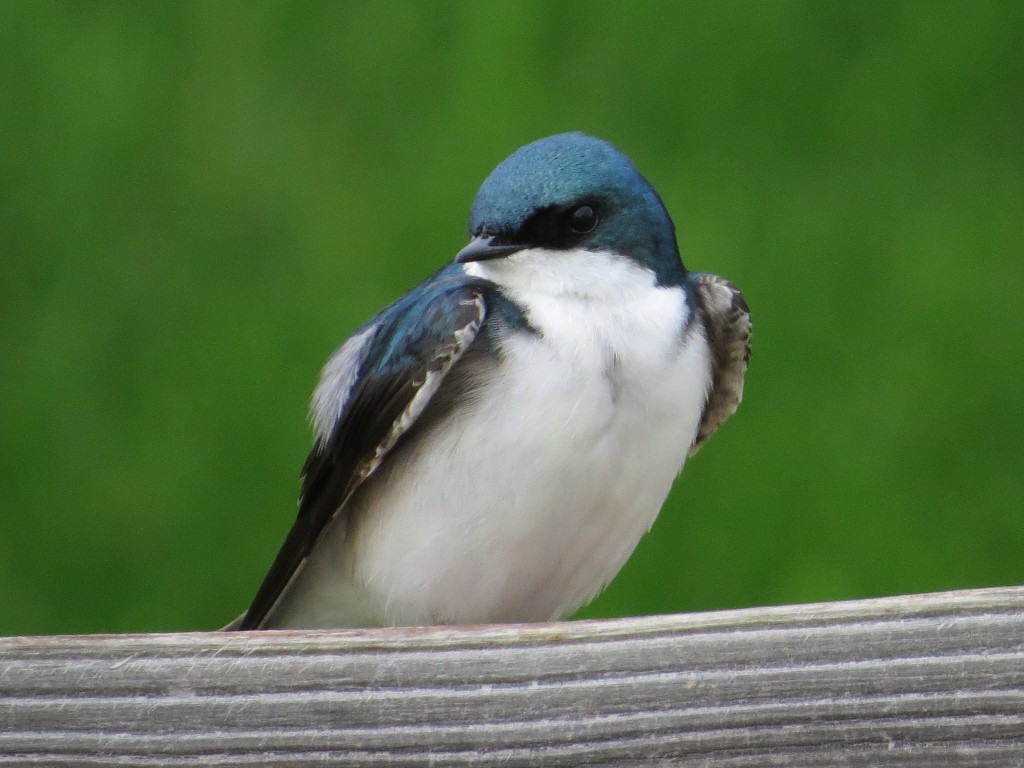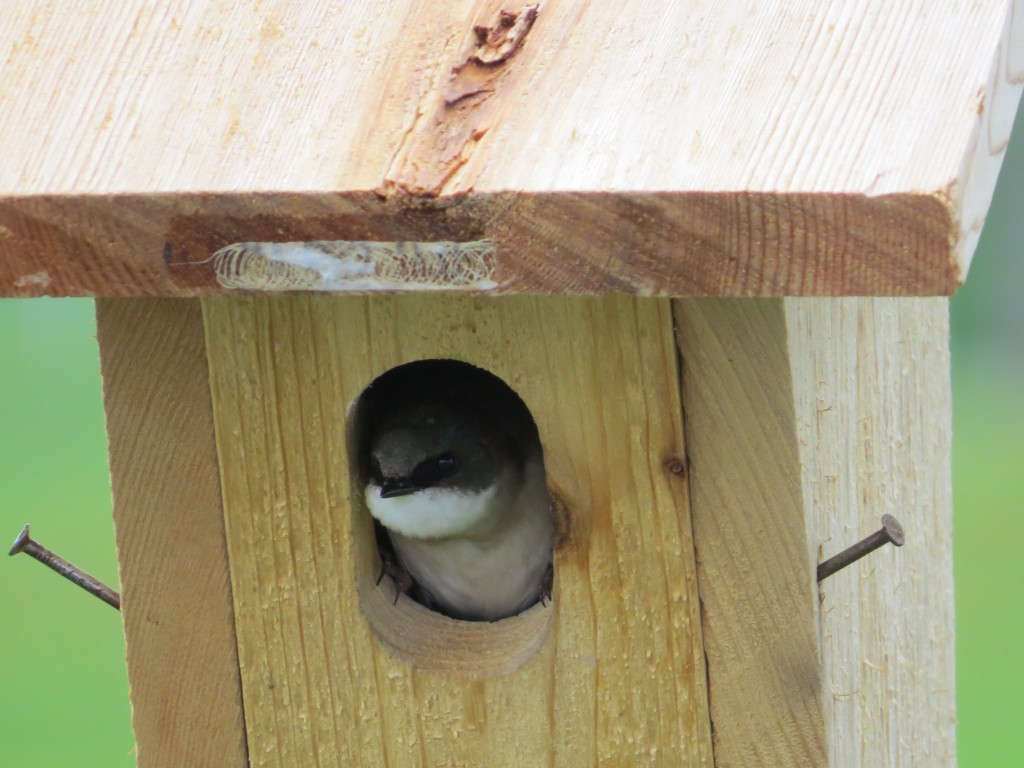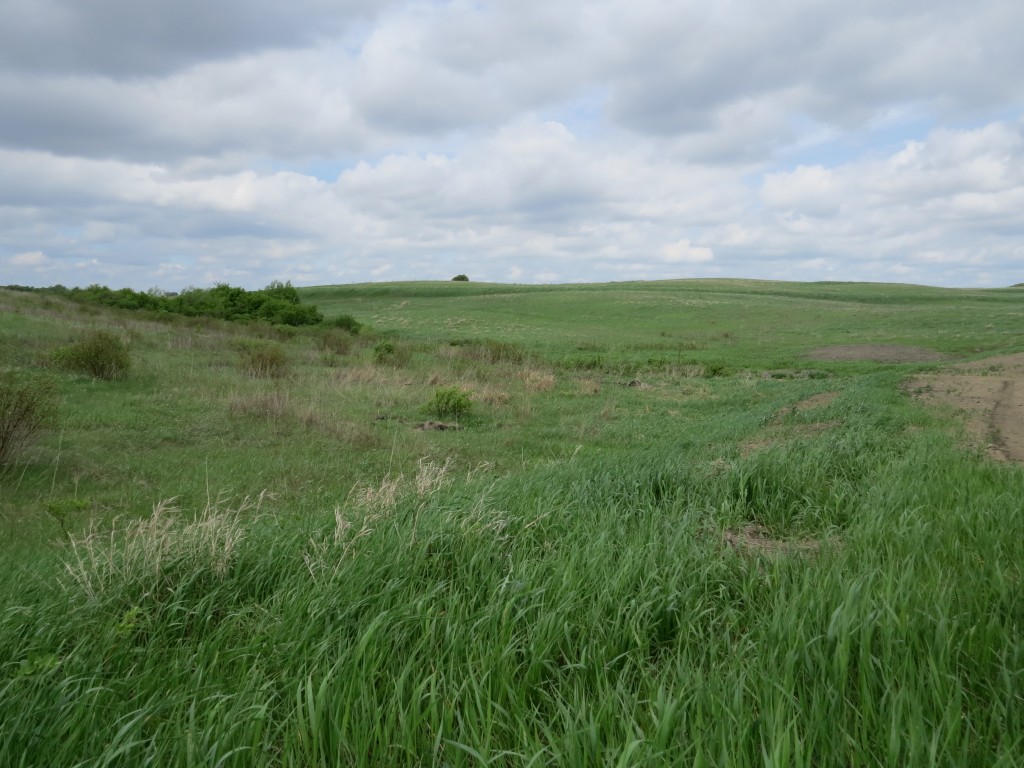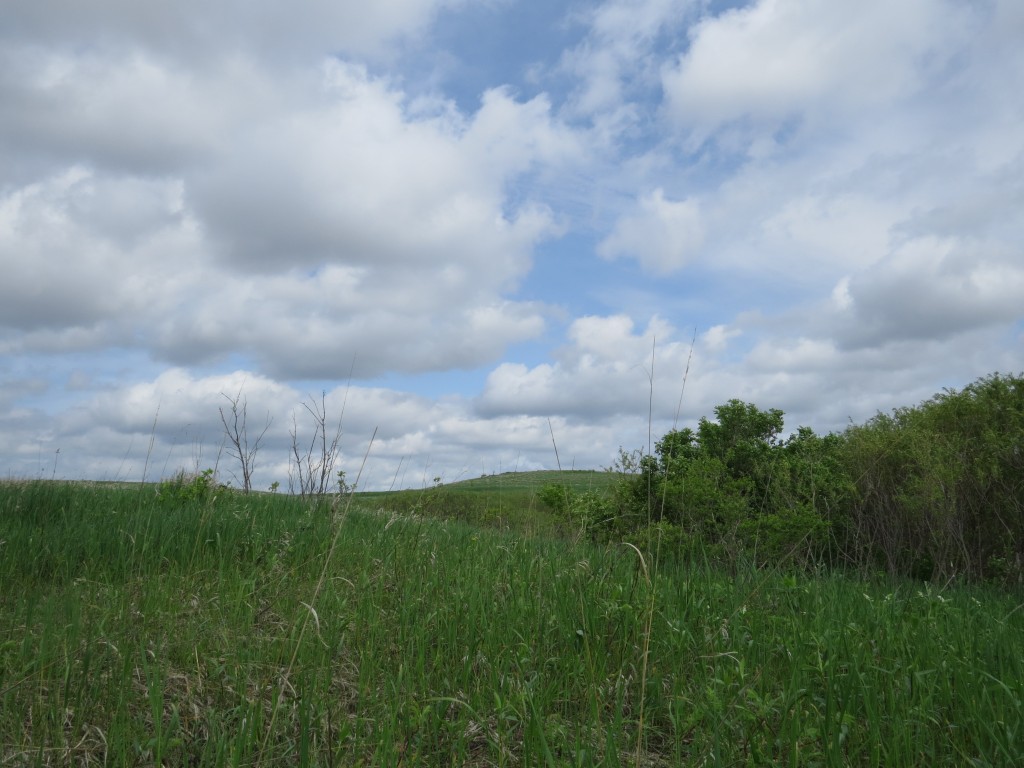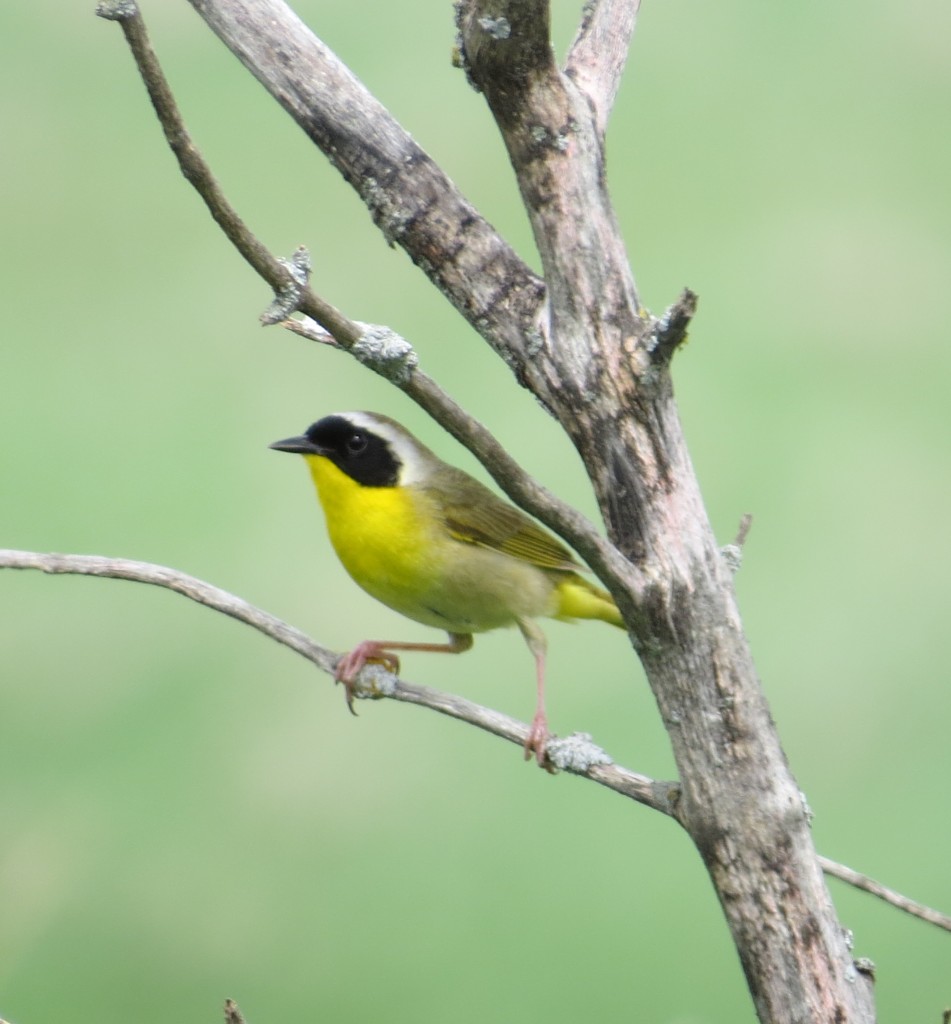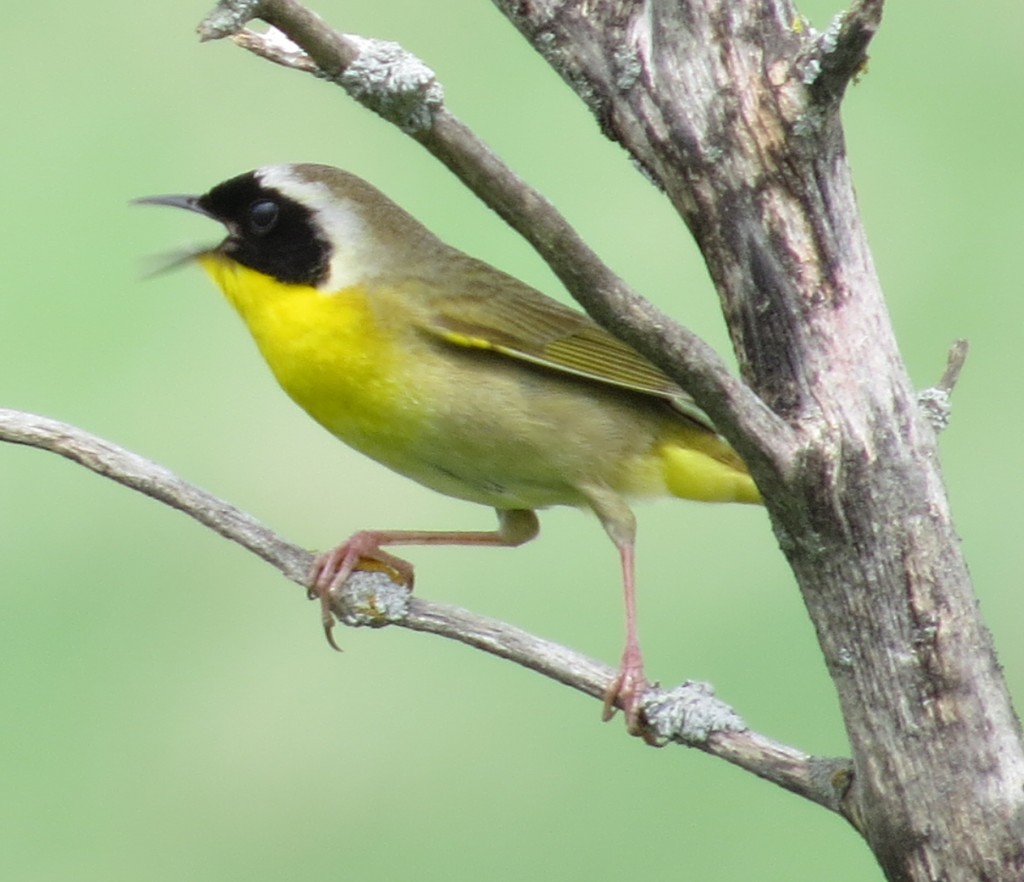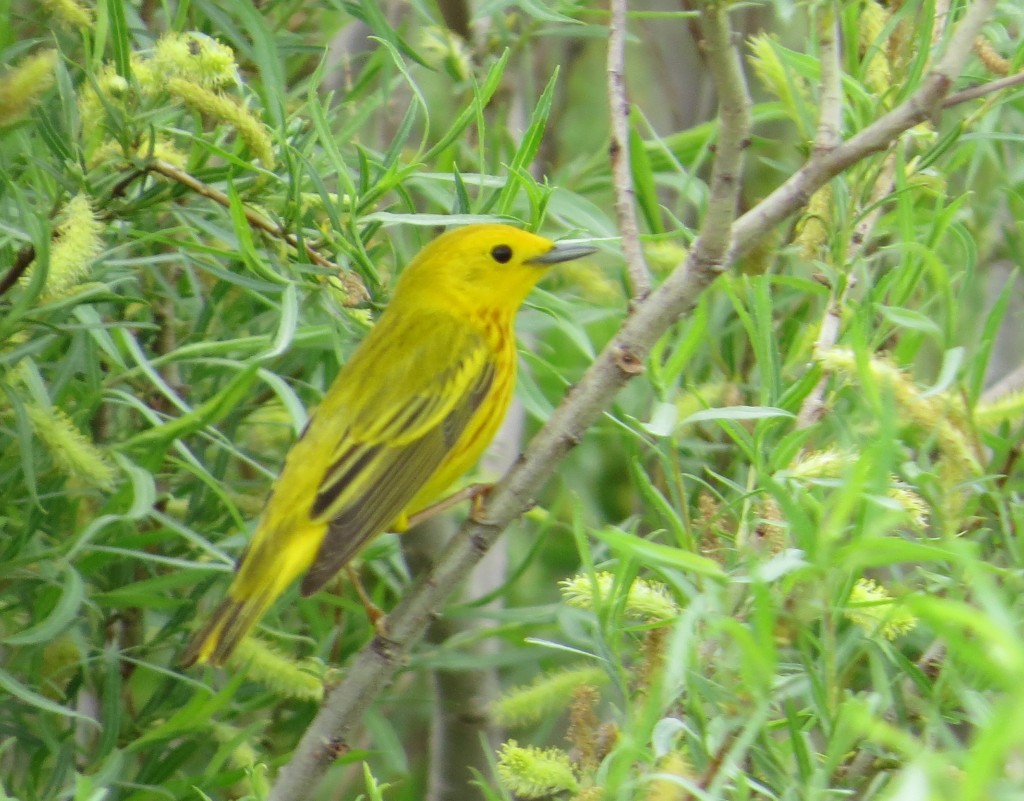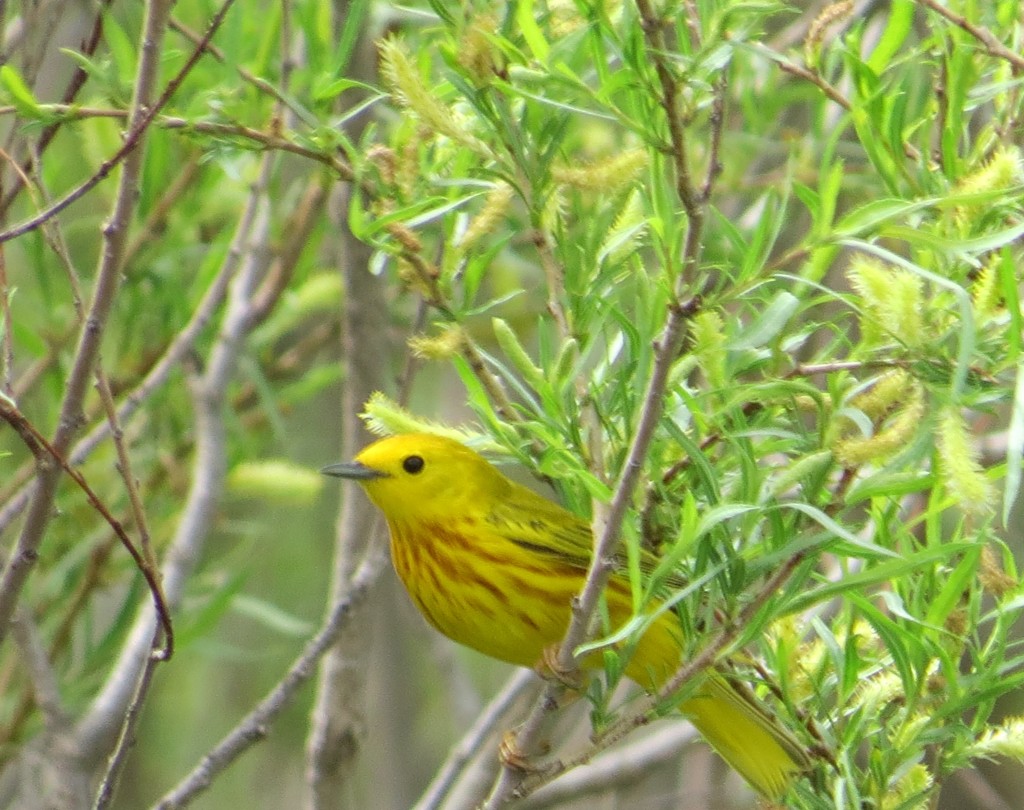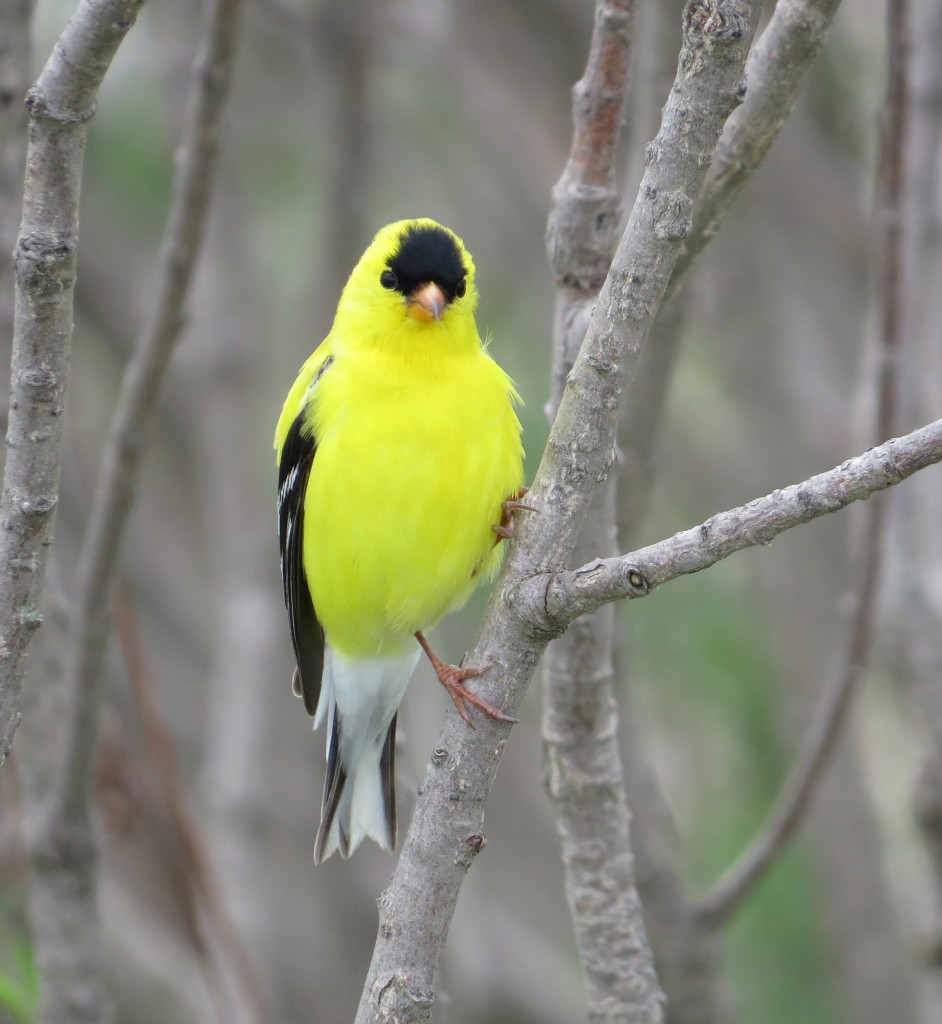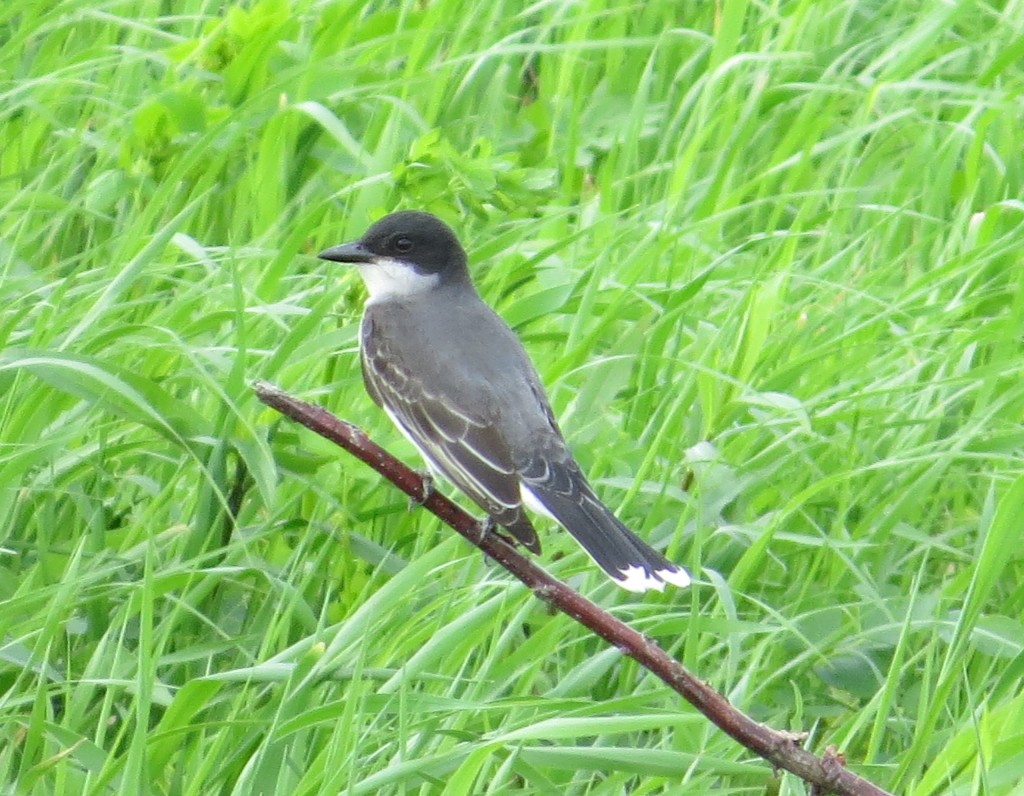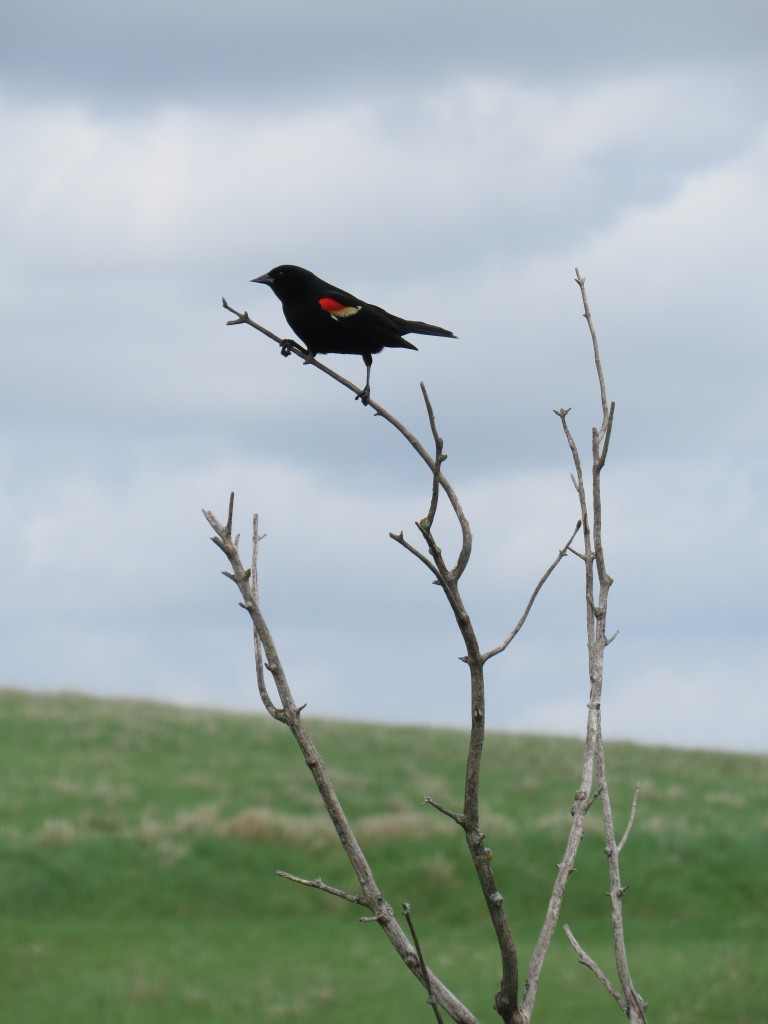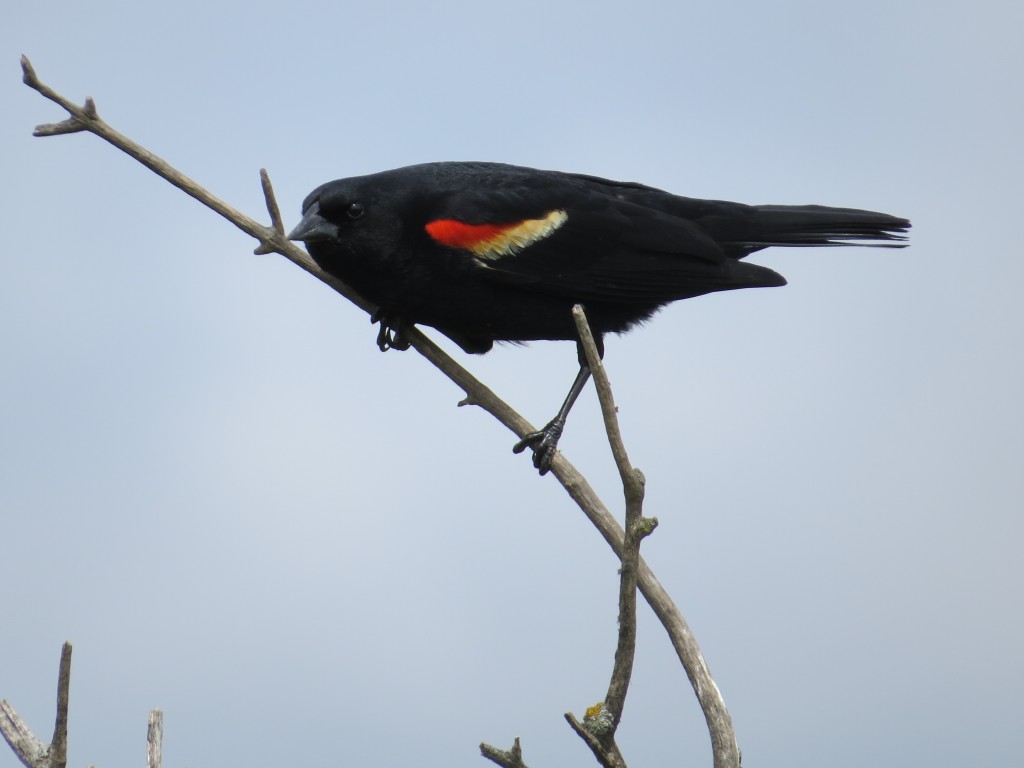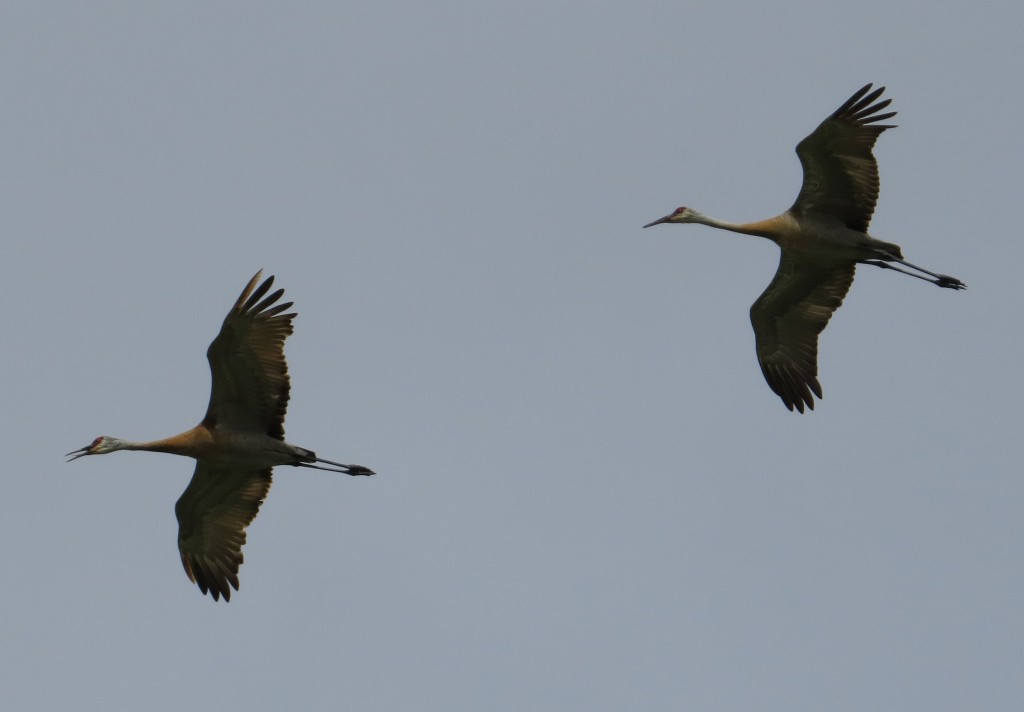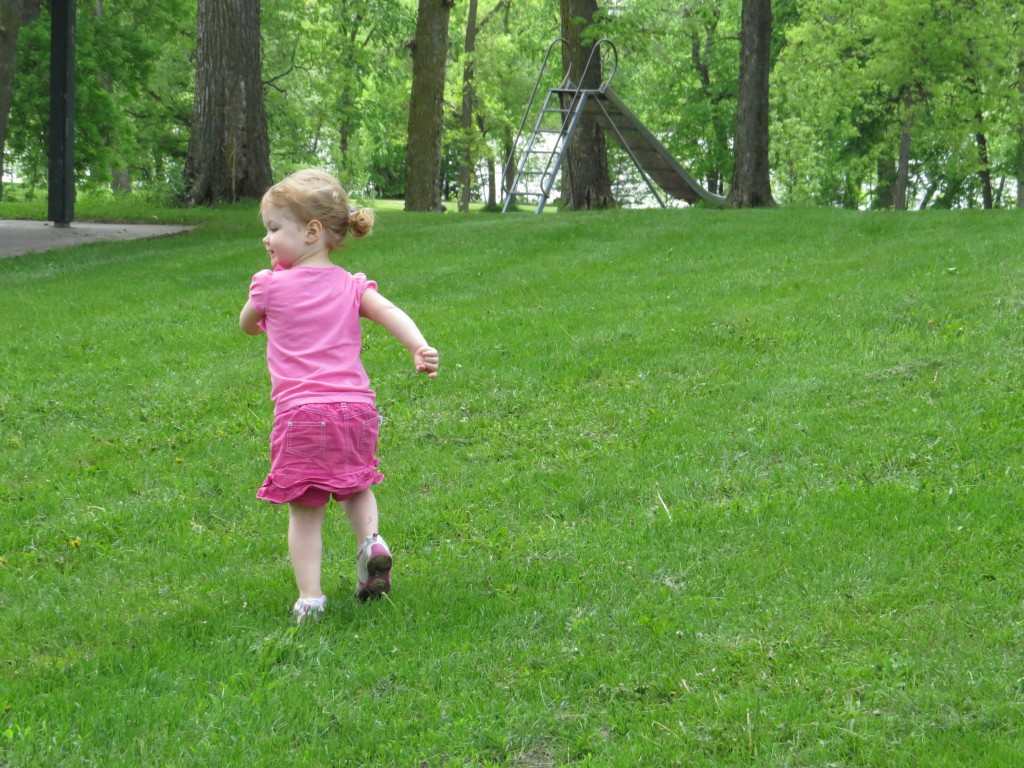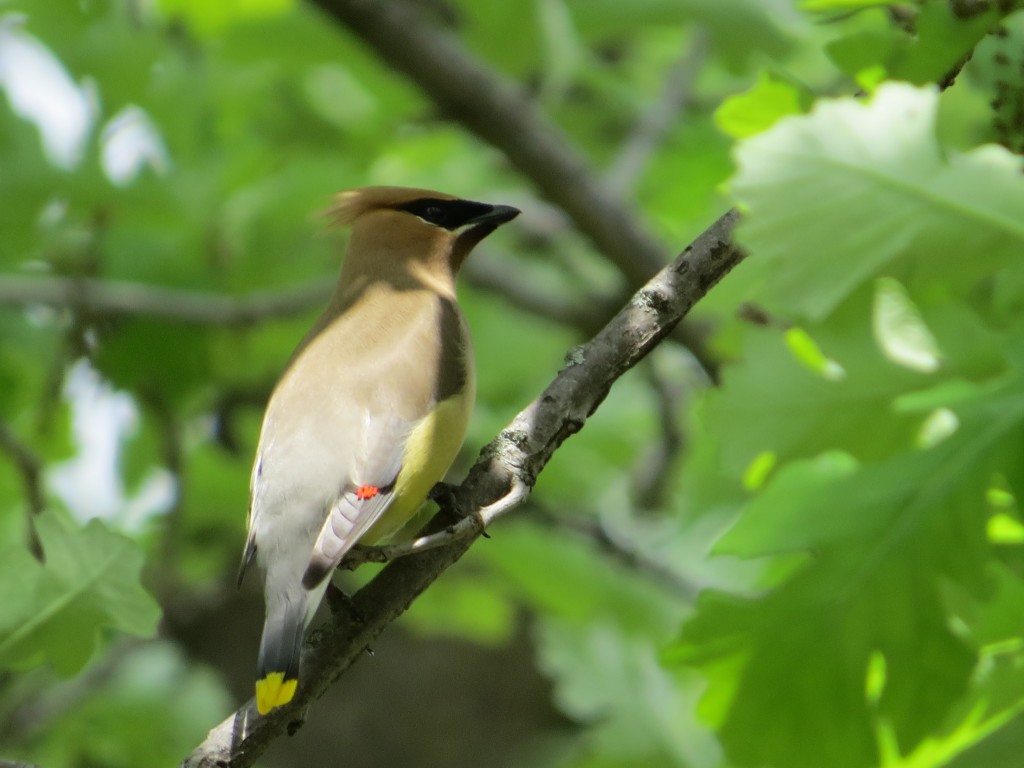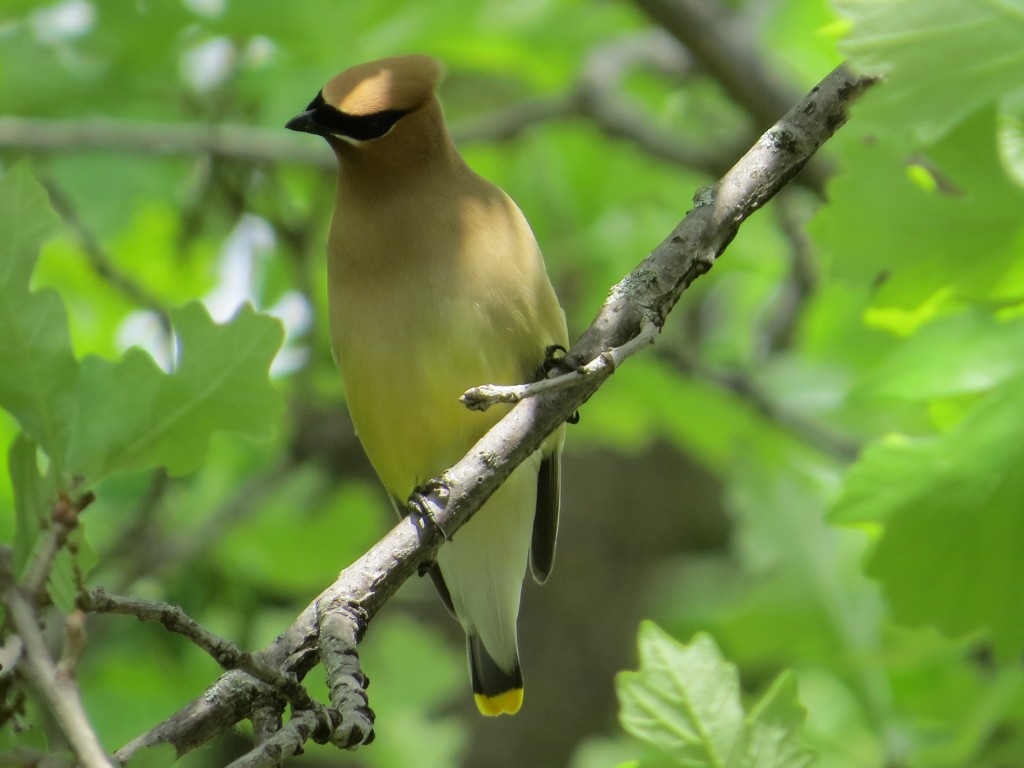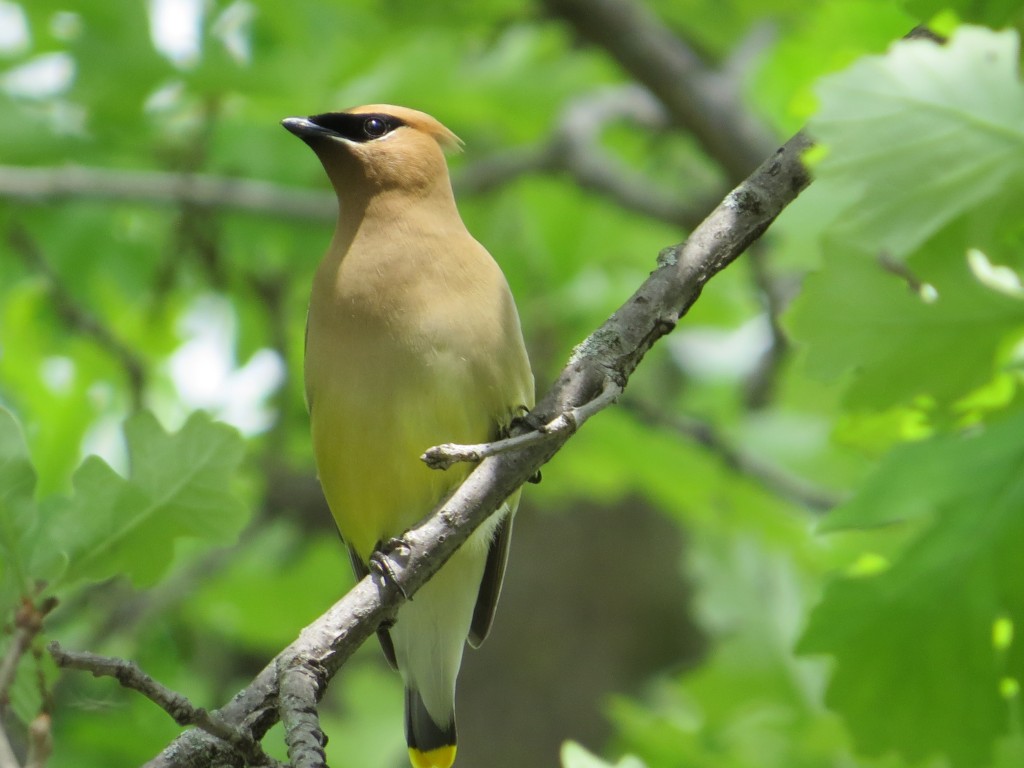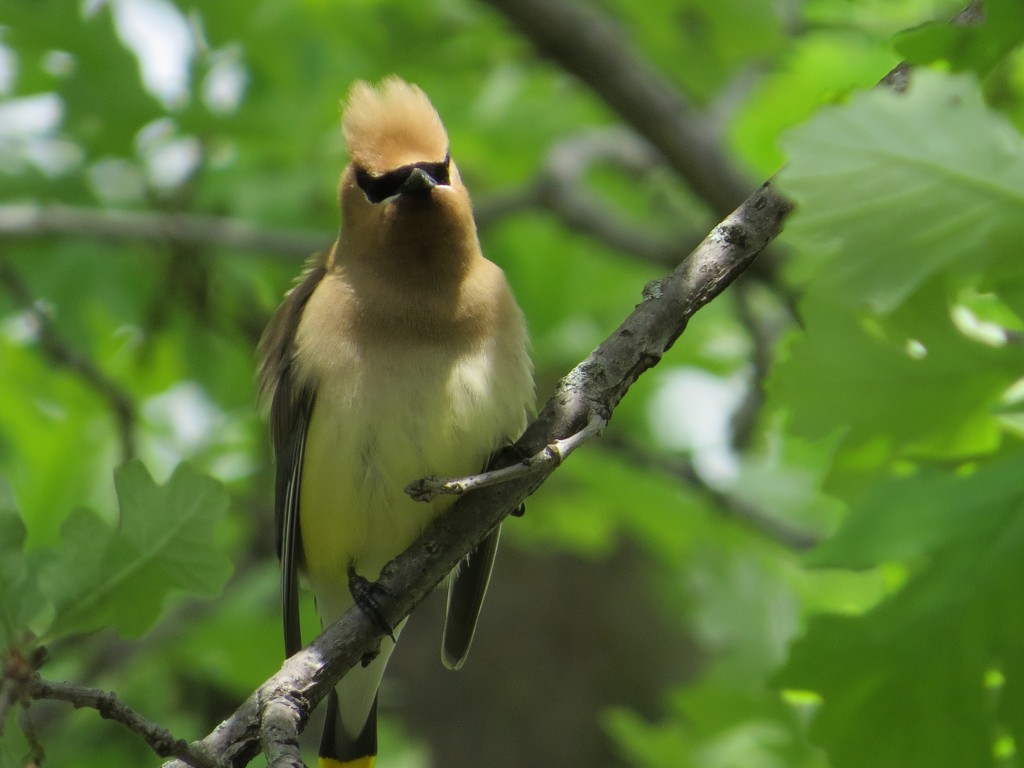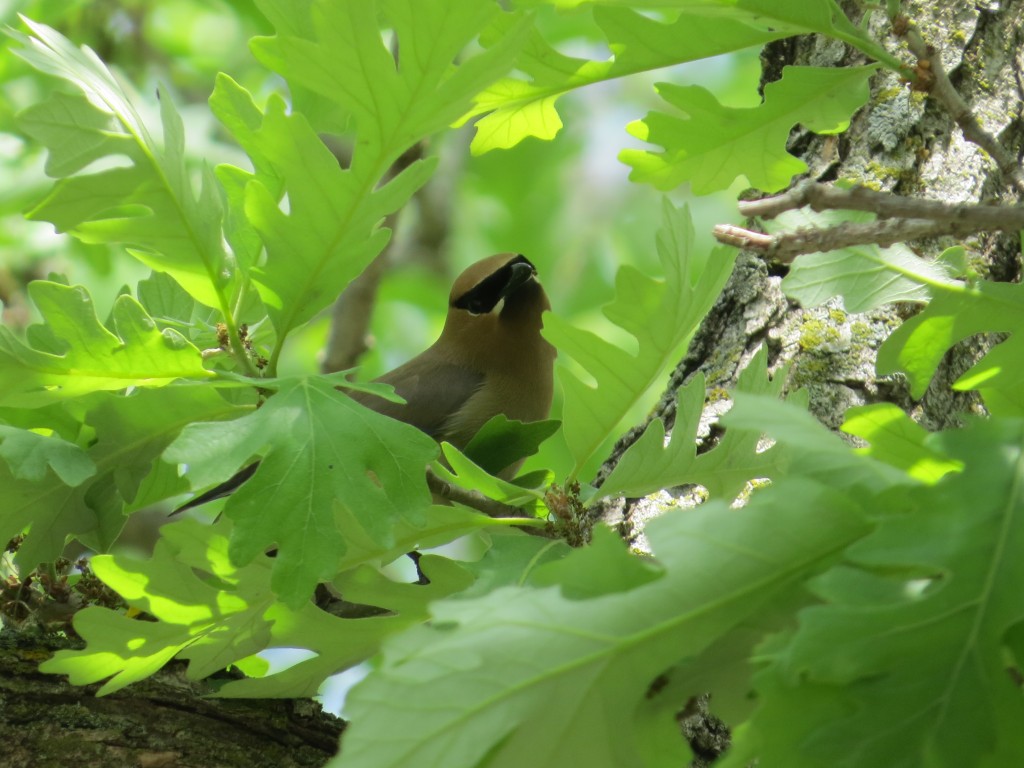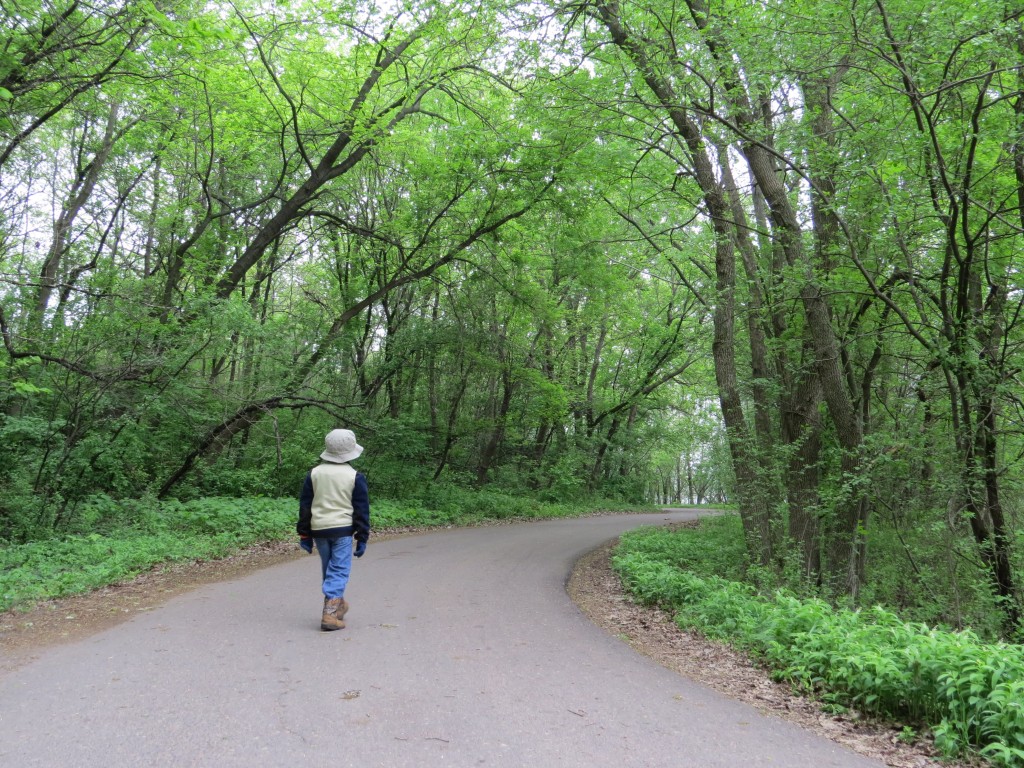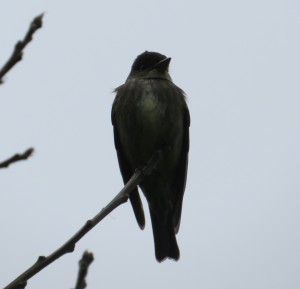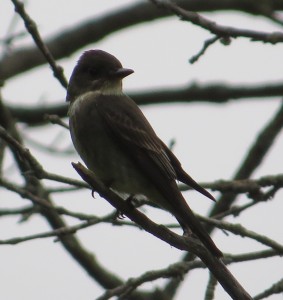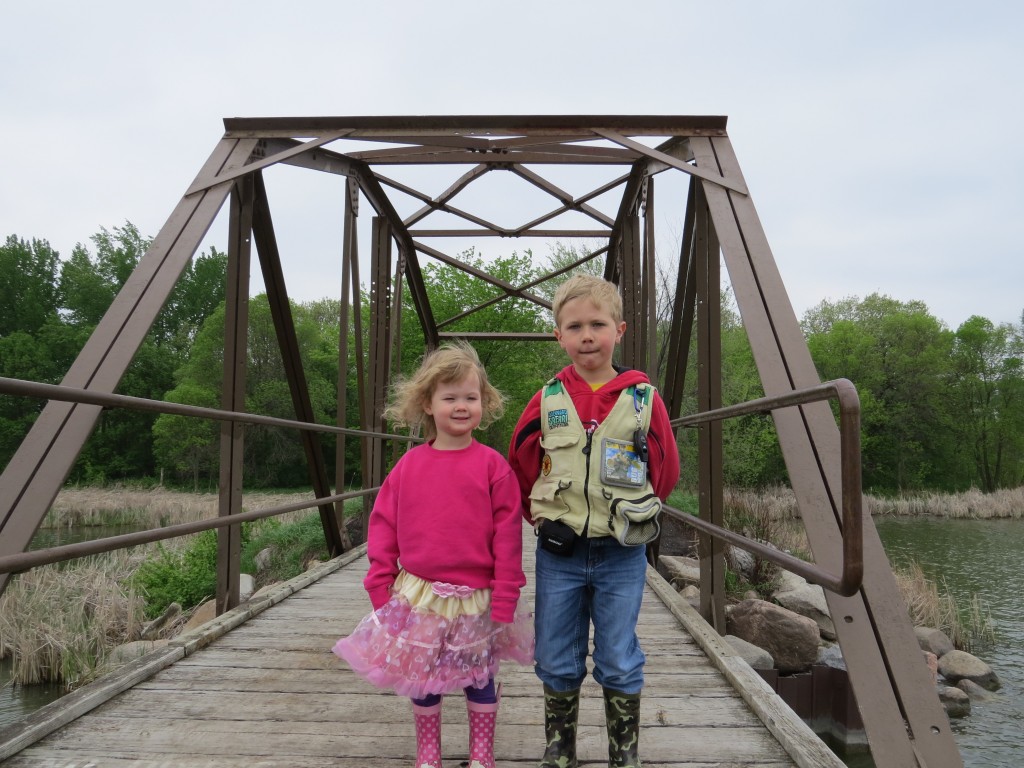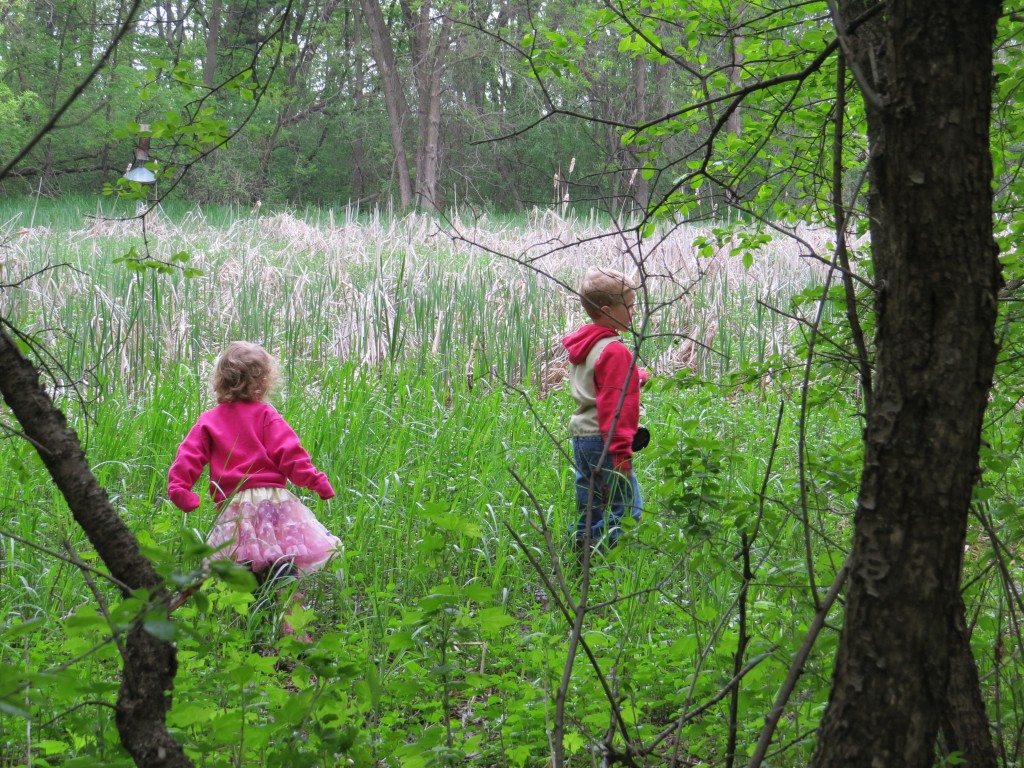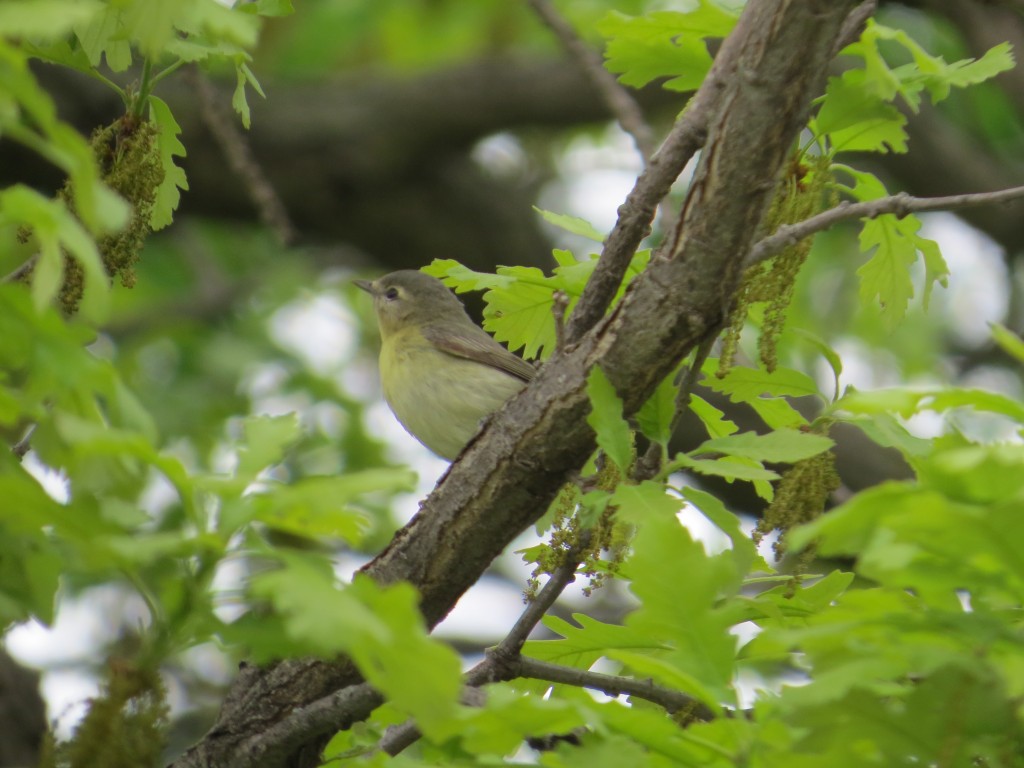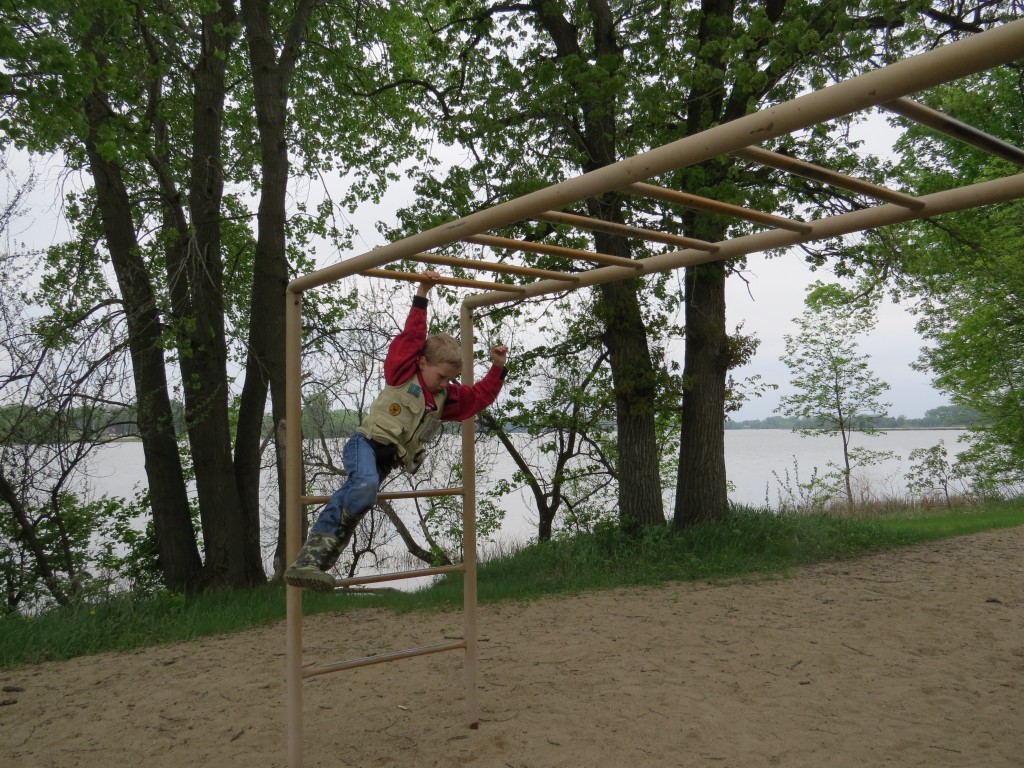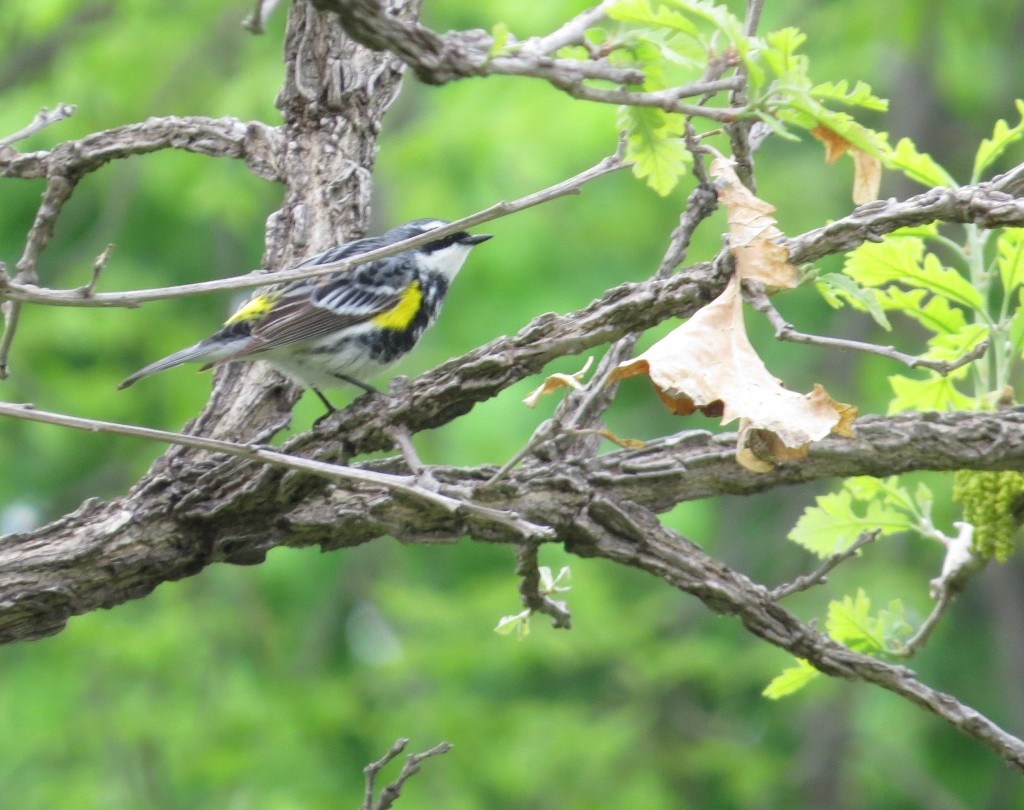Grandpa and Grandma were in town again today. They came to attend my cousin’s daughter’s graduation reception on Saturday, babysit our kids on Sunday, and then pick up my sister and her family at the airport on Monday. With all that going on, we still managed to squeeze in a little birding on the way home from church today.
Last night I had put out an email request to the die-hard birders in our county to give me any information on a list of certain species. One of the birds I was after was the Cliff Swallow, and one guy wrote back telling me about a bridge in town where I could find them.
So we pulled off the freeway to look for Cliff Swallows living under the bridge seen below.
 It didn’t take long to find the signature mud nests with their small entrance holes. Cliff Swallows were everywhere. They were poking their heads out of the nests and flying underneath and beside the bridge. In the photo below you can see two of them in the nest holes.
It didn’t take long to find the signature mud nests with their small entrance holes. Cliff Swallows were everywhere. They were poking their heads out of the nests and flying underneath and beside the bridge. In the photo below you can see two of them in the nest holes.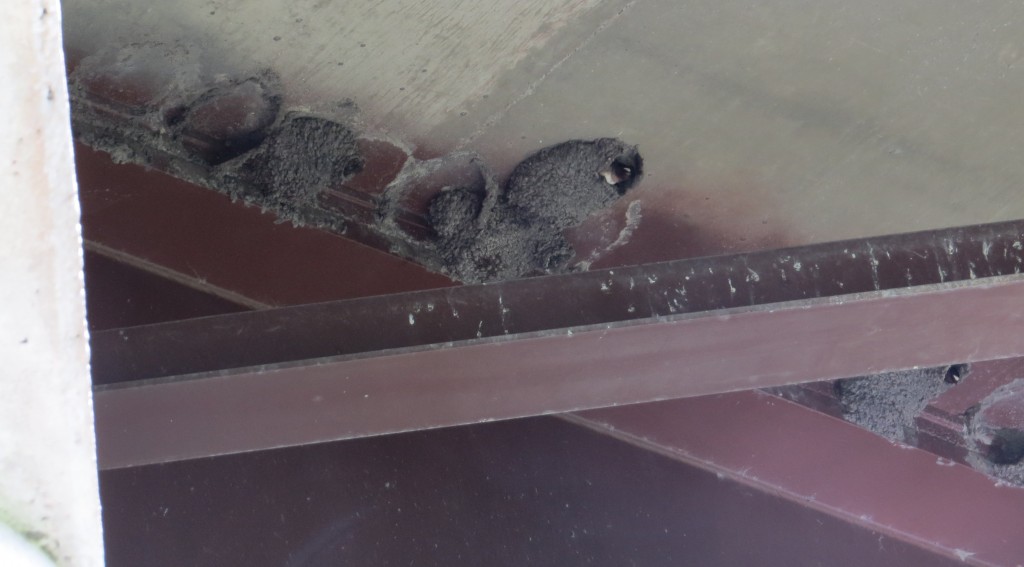 Here’s a close-up shot of this life bird. They look very similar to the Barn Swallow, but this white forehead patch is field mark of the Cliff Swallow.
Here’s a close-up shot of this life bird. They look very similar to the Barn Swallow, but this white forehead patch is field mark of the Cliff Swallow.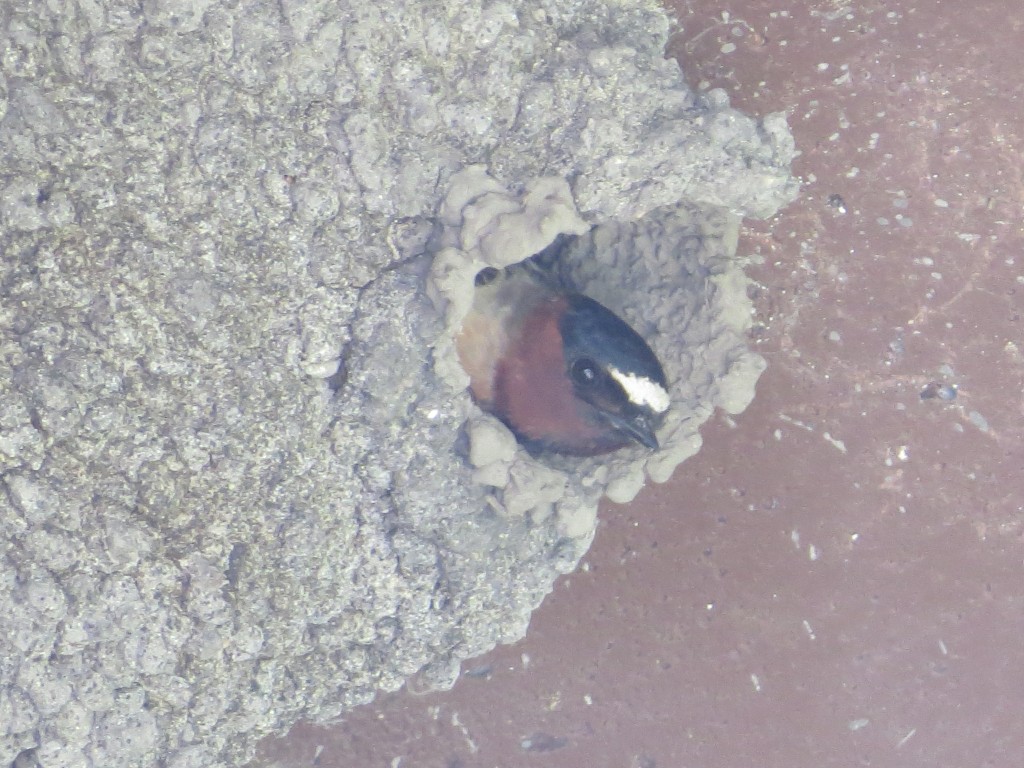 Another field mark to distinguish them from the Barn Swallows is the tail shape. Barn Swallows have long, forked tails; the Cliff Swallows’ are more square.
Another field mark to distinguish them from the Barn Swallows is the tail shape. Barn Swallows have long, forked tails; the Cliff Swallows’ are more square.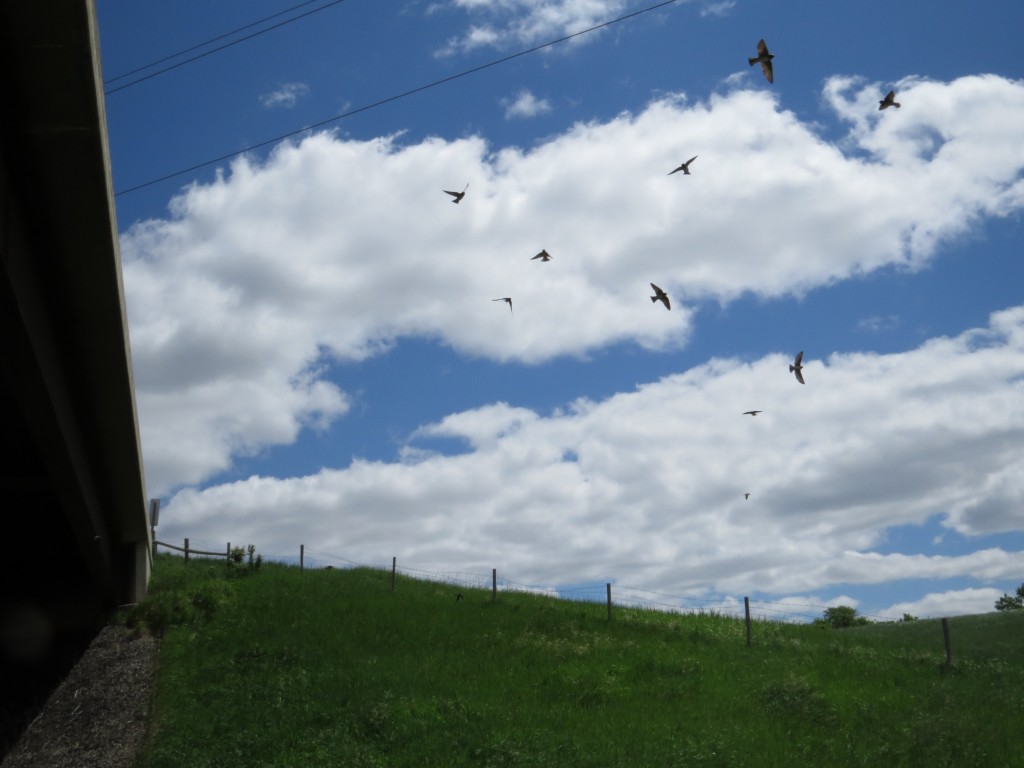 And this buffy/white rump patch is another distinguishing mark. Barn Swallows are all dark blue on the back.
And this buffy/white rump patch is another distinguishing mark. Barn Swallows are all dark blue on the back.
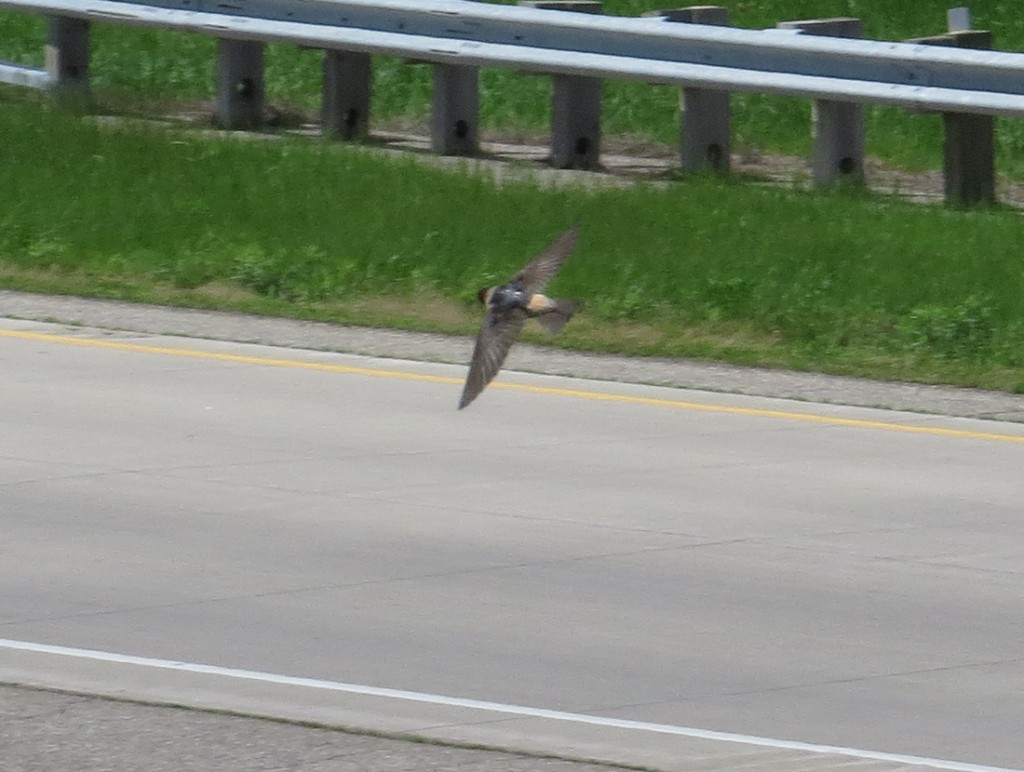
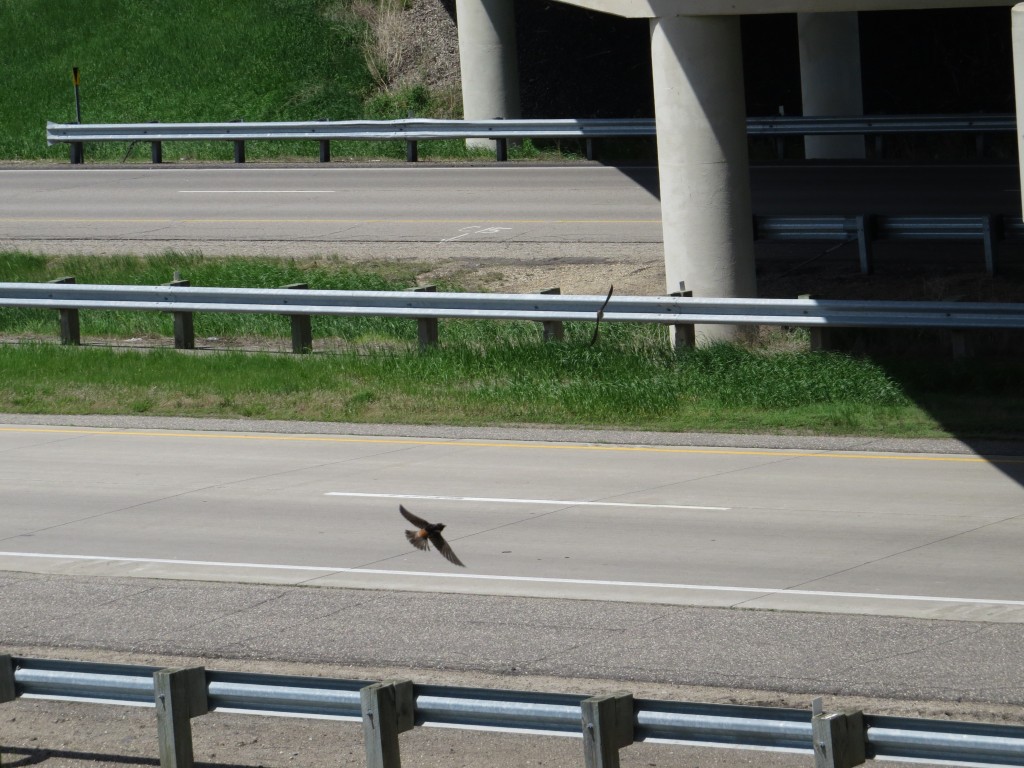 The Cliff Swallow wasn’t the only life bird we’ve gotten recently. Last Thursday we picked up a couple more when the kids and I went birding in the evening while Melissa went running. This was the same day I did my prairie photo shoot. In fact, we went back to that same location. A beautiful day turned into a stunning evening.
The Cliff Swallow wasn’t the only life bird we’ve gotten recently. Last Thursday we picked up a couple more when the kids and I went birding in the evening while Melissa went running. This was the same day I did my prairie photo shoot. In fact, we went back to that same location. A beautiful day turned into a stunning evening.
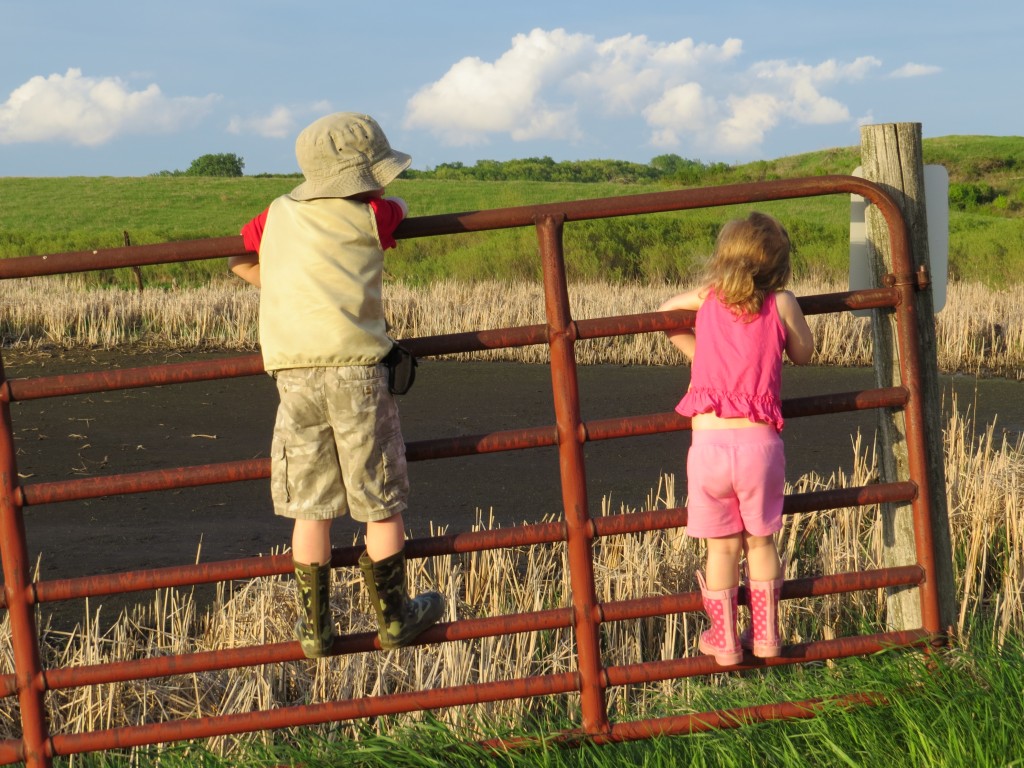 We were fortunate enough to find this small flock of Least Sandpipers. The Least Sandpiper was a new bird for us.
We were fortunate enough to find this small flock of Least Sandpipers. The Least Sandpiper was a new bird for us.
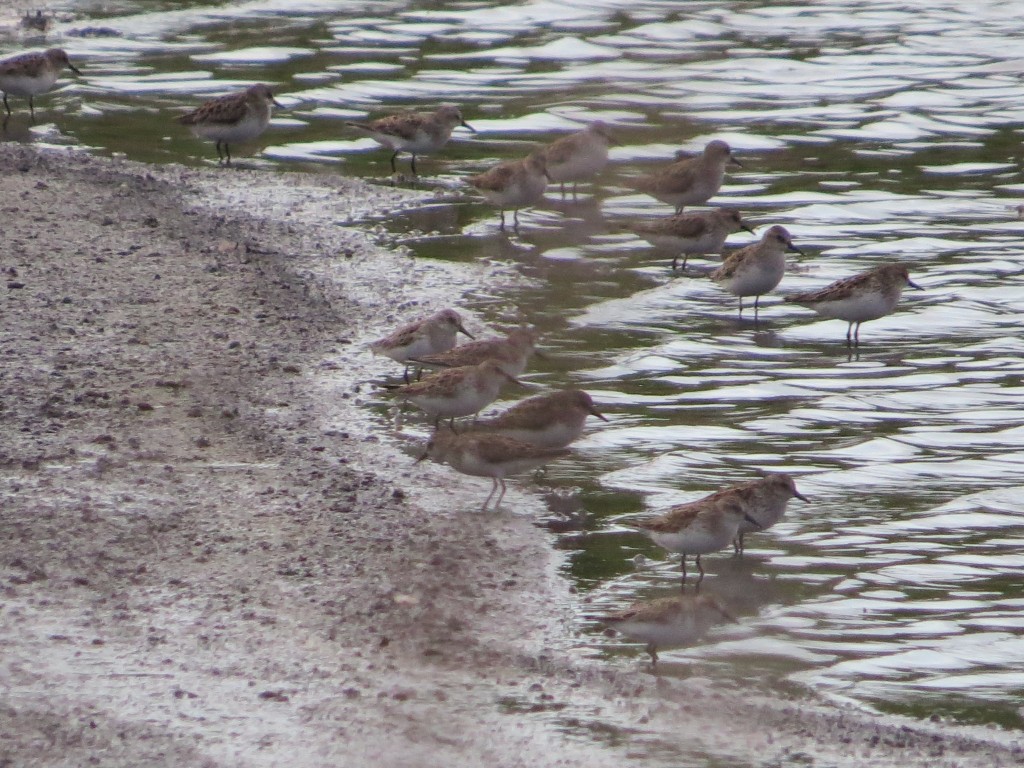 Then I found the Spotted Sandpiper by a small creek. Just as I went to point it out to Evan, it disappeared. He still wants to count it for his life list because he was along on the trip. I’m sure we’ll run into this resident bird on future birding trips anyway.
Then I found the Spotted Sandpiper by a small creek. Just as I went to point it out to Evan, it disappeared. He still wants to count it for his life list because he was along on the trip. I’m sure we’ll run into this resident bird on future birding trips anyway.
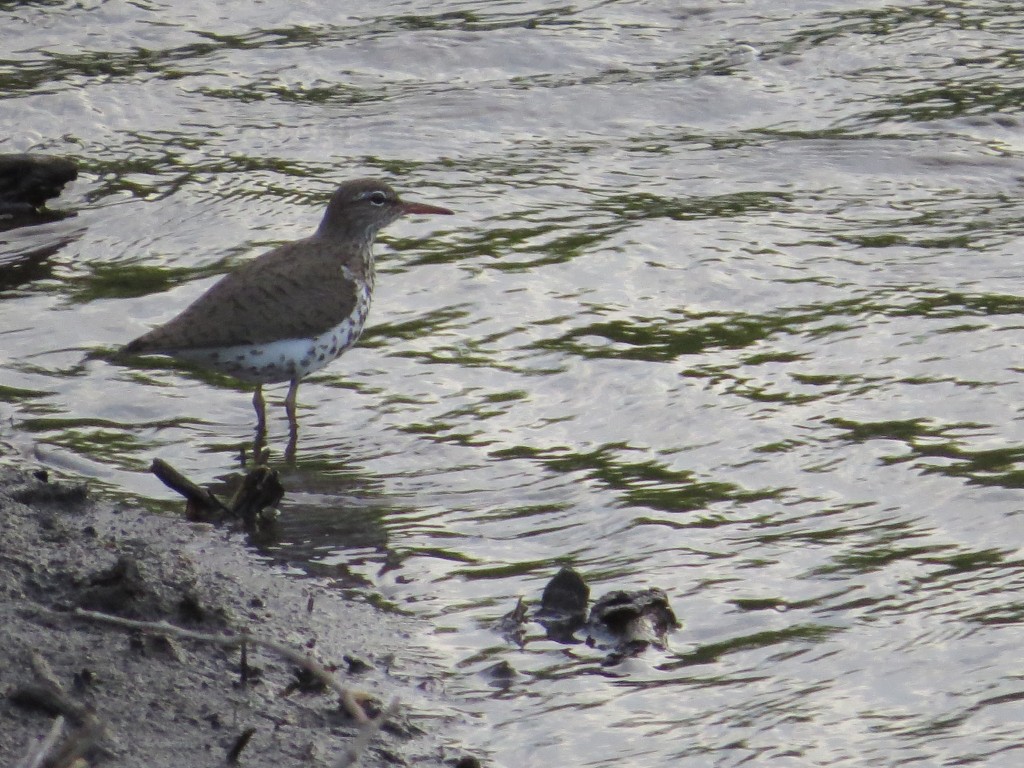 I didn’t know either of these sandpipers until I looked at the photos afterward and studied them in the bird book. I made another cool discovery in the process. The day before I had seen a shorebird walk into the tall prairie grass. It was strange to see a bird like this not even close to the water. Shorebirds are usually found on or near a shore. I dismissed the sighting because it was brief, and I had no idea to tell what the bird was. However, when I was reading about different sandpipers, I found out that the Upland Sandpiper lives in a prairie habitat and is not found by the water. It is the only shorebird that lives in this type of habitat. Cool! I can positively say that I saw this bird based on its location. Plus, my quick glimpse appeared to match the photo in the book. Hopefully we can find another one of these soon for Evan to add to his life list too.
I didn’t know either of these sandpipers until I looked at the photos afterward and studied them in the bird book. I made another cool discovery in the process. The day before I had seen a shorebird walk into the tall prairie grass. It was strange to see a bird like this not even close to the water. Shorebirds are usually found on or near a shore. I dismissed the sighting because it was brief, and I had no idea to tell what the bird was. However, when I was reading about different sandpipers, I found out that the Upland Sandpiper lives in a prairie habitat and is not found by the water. It is the only shorebird that lives in this type of habitat. Cool! I can positively say that I saw this bird based on its location. Plus, my quick glimpse appeared to match the photo in the book. Hopefully we can find another one of these soon for Evan to add to his life list too.

